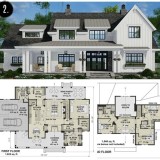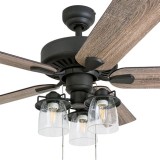Essential Aspects of Wind Turbine For Farm Use
Harnessing the power of wind energy has the potential to transform the agricultural landscape, providing sustainable and cost-effective alternatives for powering farm operations. Understanding the essential aspects of wind turbine systems specifically designed for farm use is paramount for maximizing efficiency and ensuring optimal performance.
### 1. Turbine TypeSelecting the appropriate wind turbine type depends on the site-specific wind conditions and power requirements. Horizontal axis turbines (HAWTs) are commonly used on farms, with blades rotating around a horizontal axis. Vertical axis turbines (VAWTs) offer advantages in areas with turbulent wind patterns but may have lower energy efficiency.
### 2. Capacity and OutputThe turbine's capacity, measured in kilowatts (kW), determines its power generation potential. It should align with the farm's electrical demand and power consumption patterns. The turbine's output refers to the actual power generated, which is influenced by wind speed and turbine efficiency.
### 3. Tower HeightThe height of the wind turbine tower significantly affects its energy capture. Taller towers access stronger winds, increasing power generation. However, taller towers also require more robust foundations and incur higher construction costs.
### 4. Wind Speed and FrequencyThe site's wind speed and frequency play a crucial role in determining the viability of wind turbines. Turbines are classified based on their cut-in and cut-out wind speeds, where they begin and cease generating power, respectively. Understanding these parameters ensures that the turbine operates within its optimal performance range.
### 5. Noise ConsiderationsWind turbines can generate noise during operation, which may impact nearby neighbors or livestock. Selecting low-noise turbines and employing appropriate noise mitigation measures, such as sound barriers or setbacks, can minimize disturbances.
### 6. Grid IntegrationIntegrating wind turbines into the electrical grid requires careful planning. Considerations include grid capacity, power quality, and synchronization with existing power sources. Ensuring proper grid interconnection ensures stable and reliable power delivery.
### 7. Maintenance and ServiceRegular maintenance and servicing are essential for ensuring the long-term performance and safety of wind turbines. Establishing a comprehensive maintenance plan, including inspections, repairs, and component replacements, will optimize turbine operation and extend its lifespan.

Wind Energy

Wind Turbine Facts Loeriesfontein Farm Sustainable Energy

Types Of Wind U S Energy Information Administration Eia

Skkynet Case Study Wind Turbine Farm Usa

How Do Wind Turbines Work Department Of Energy

Wind Power Turbine Lease Explained Ldc Infrastructure

World S Largest Wind Farms Nw Renewable Energy Institute

How Some Wind Turbines Hog The Breeze

Onshore Wind Power Farms And Technology Ge Renewable Energy

Wind Farm Wikipedia








